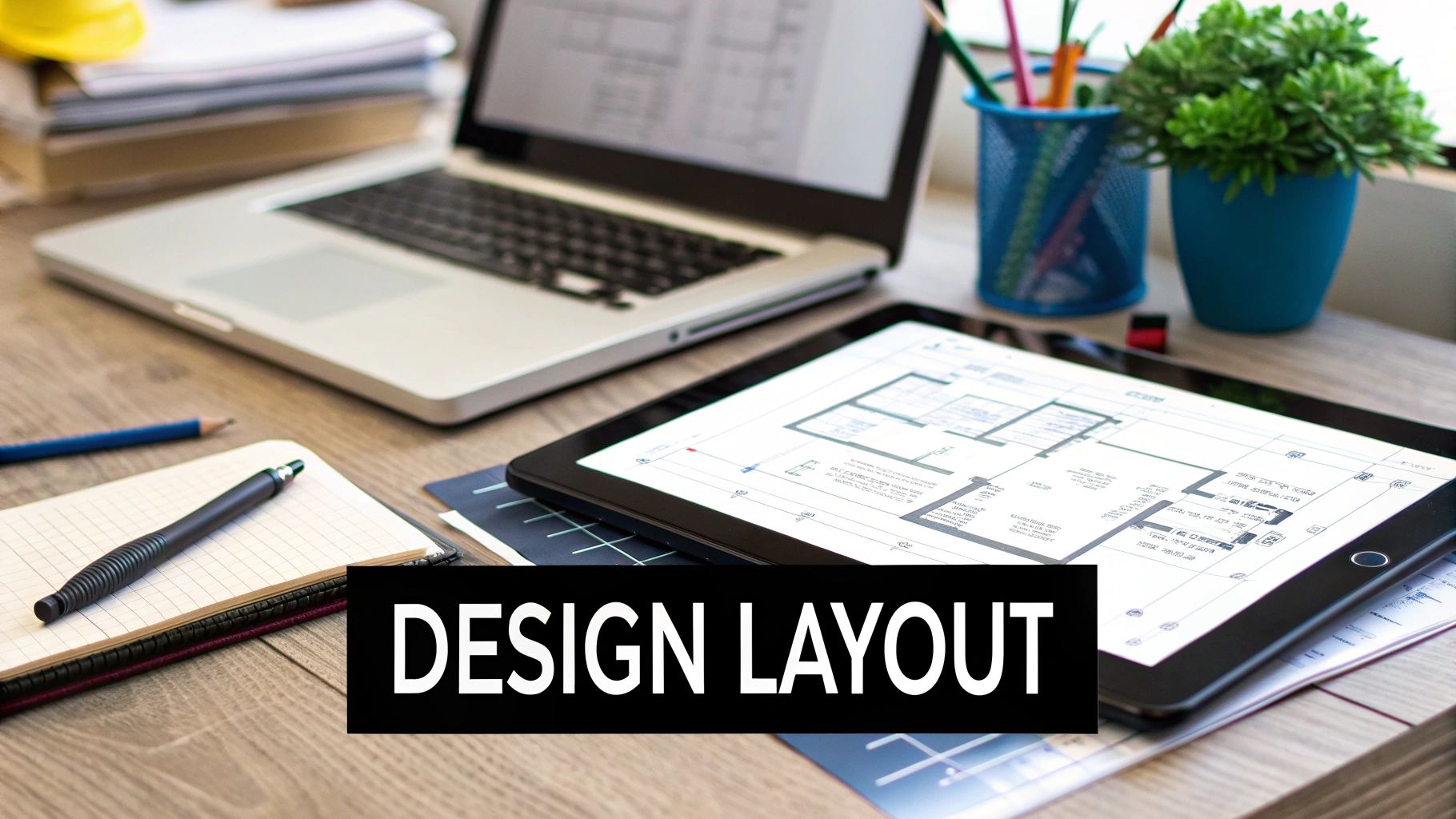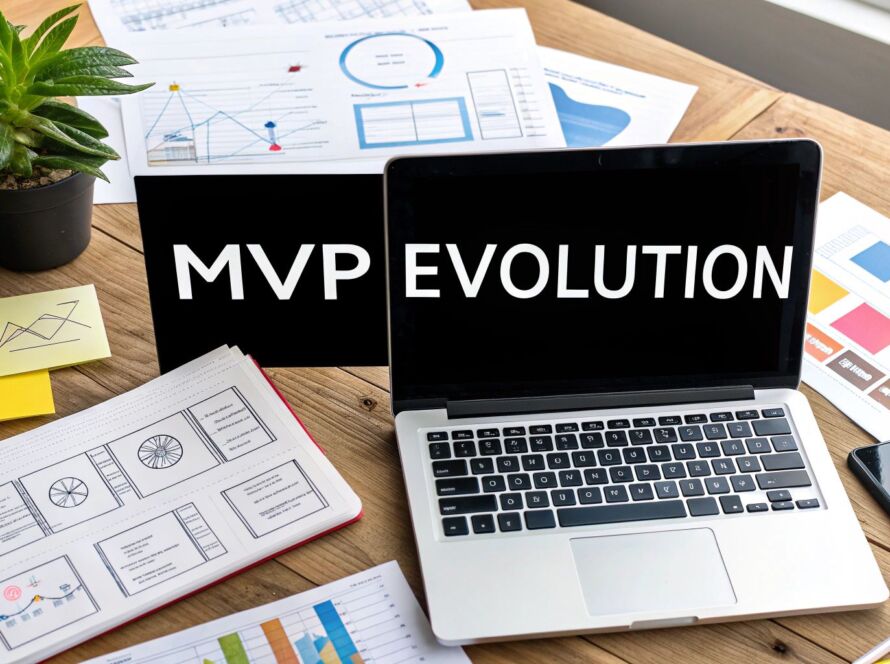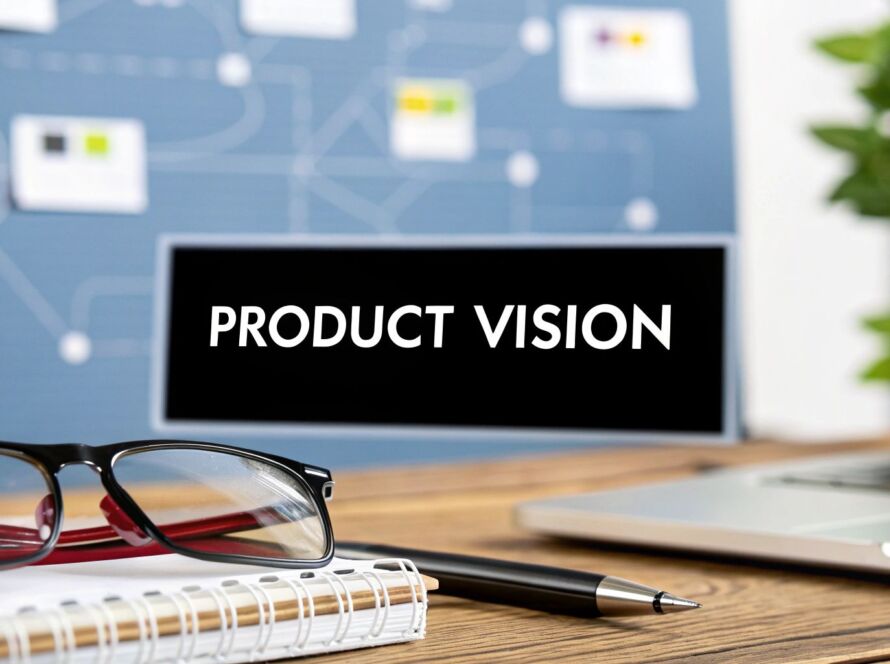Getting Started With Product Requirements Documents

A product requirements document serves as the foundation for successful product development. When crafted thoughtfully, it guides your team from initial concept through final launch, making it an essential tool for building great products. The key is understanding how to create a document that truly serves your team's needs rather than just checking boxes.
Understanding the Purpose of a PRD
Think of a product requirements document (PRD) like a detailed roadmap for your project – it shows everyone where you're going and how to get there. Just as an architect's blueprint guides construction workers in building a house exactly to spec, a PRD helps development teams build the right product. A clear PRD prevents confusion and ensures the whole team shares the same vision from day one. For instance, when building a new mobile app, your PRD would spell out who the app is for, what problems it solves, and exactly how it should work.
Key Components of an Effective Product Requirements Document Template
A strong PRD needs certain core elements to effectively guide product development:
- Objectives: Start by clearly stating what problem you're solving and what success looks like. This sets the direction for everything that follows.
- Target Audience: Paint a clear picture of who will use your product, including their needs, pain points, and what motivates them.
- Features and Functionality: Map out the specific features your product needs and explain how each one will work to benefit users.
- User Stories: Break down how real people will interact with your product to accomplish their goals. This keeps development focused on actual user needs.
- Technical Specifications: Detail the platforms, technologies, and systems needed to bring your product to life.
- Success Metrics: Define concrete ways to measure if your product is meeting its goals, using specific KPIs to track progress.
Choosing the Right Product Requirements Document Template
While starting with a basic template is helpful, the best PRDs are customized to fit your specific project and team. For example, if you're using agile methods, your template might focus more on user stories and frequent iterations. A waterfall project, on the other hand, typically needs more upfront detail. The template for a complex enterprise software system will look quite different from one for a simple mobile app. The key is finding what works for your situation through trial and refinement. This ensures your PRD remains practical and valuable throughout development, helping guide your team toward building an excellent product.
Building Your PRD Template That Works
Creating an effective product requirements document template is essential for product success. A clear, well-organized template serves as a roadmap that keeps your entire team focused on the same goals. When structured properly, it prevents miscommunication and helps maintain alignment throughout development. However, a poorly designed template can create confusion and slow down progress. Let's explore how to build a PRD template that works for your team.
Key Elements of a Successful Product Requirements Document Template
An effective PRD template does more than list features – it tells your product's complete story. By serving as a central reference point, it clearly communicates the strategic vision, tactical details, and implementation approach. This shared understanding helps teams avoid costly mistakes and delays.
-
Goals and Objectives: Start by defining the specific problem your product solves and what success looks like. Your goals become the foundation for all decisions that follow. For instance, you might aim to increase user engagement by 20% or expand into an adjacent market segment. Clear objectives give teams a shared direction.
-
Target Audience: Know your users inside and out. Include detailed personas that capture their needs, challenges, and motivations. This user focus ensures you build features that provide real value. Consider how different user groups have unique requirements – a teen-focused app needs different design choices than one for retirees.
-
Functional Requirements: Document each feature's purpose and how it improves the user experience. Use cases, user stories, and workflow diagrams help illustrate how people will interact with your product. This section connects high-level goals to specific functionality.
-
Non-Functional Requirements: Consider critical behind-the-scenes elements like performance, security, and usability standards. For example, an e-commerce platform might require two-second page loads to prevent abandoned carts. These requirements ensure your product works reliably at scale.
-
Release Criteria: Define clear benchmarks for launch readiness. Include testing requirements, performance thresholds, and any regulatory compliance needs. Having explicit release criteria helps maintain quality standards and prevents premature launches.
Structuring Your Product Requirements Document for Maximum Impact
How you organize your PRD template dramatically affects its usefulness. A logical structure makes information easy to find and understand. Here's an effective way to arrange the key sections:
- Executive Summary: Give stakeholders a quick overview of the product vision and goals. This allows busy readers to grasp the key points without diving into details.
- Problem Statement: Explain why this product needs to exist by clearly describing the problem it solves. This context helps justify development priorities.
- Proposed Solution: Outline how your product addresses user needs through its core features and benefits. Focus on the unique value you'll deliver.
- Detailed Specifications: Dive deep into individual features, including technical requirements, UI design, and expected performance. This gives engineers what they need to build.
- Success Metrics: Define how you'll measure results through specific KPIs like engagement rates, conversions, or customer satisfaction scores.
A thoughtfully designed PRD template keeps everyone moving in the same direction. It prevents scope creep, reduces rework, and helps deliver a product that genuinely meets market needs. By following these guidelines, you create a foundation for efficient development and successful product launches.
Crafting Requirements That Drive Development

Every successful product starts with clear, well-documented requirements. The product requirements document (PRD) serves as the foundation that guides teams from initial concept through final launch. A carefully structured PRD helps keep everyone focused on the same goals and working toward a shared vision of success.
Defining User Stories for Enhanced Clarity
User stories make complex requirements clear and actionable by describing specific interactions between users and the product. For example, "As a new user, I want to easily create a profile so I can connect with friends." This simple format shifts focus from abstract features to real user needs and benefits. User stories also help product, design, and development teams communicate better by creating a shared understanding of how people will use the product.
Specifying Technical Requirements for Seamless Development
Beyond user stories that explain what features to build and why, technical specifications detail exactly how to build them. These specs outline everything from database structure to API integrations to security requirements. Including clear technical details in the PRD helps developers work efficiently and avoid costly rework. The specifications give engineering teams the concrete information they need to build features right the first time.
Establishing Success Metrics for Measurable Outcomes
The PRD should define clear metrics to track how well the product performs against its goals. Key performance indicators (KPIs) provide concrete data to measure progress. For an e-commerce site, important metrics might include conversion rates, average order value, and customer retention. Setting these benchmarks early lets teams monitor results and make smart decisions based on real data rather than assumptions.
Balancing Documentation and Agile Flexibility
While thorough documentation matters, the PRD must stay flexible enough to adapt as needs change. The key is finding the right balance between providing clear direction and allowing teams to respond to new information. For instance, structure the PRD to accommodate evolving user feedback and market shifts while maintaining its core purpose. This keeps the document relevant and useful throughout development while giving teams room to adjust their approach based on what they learn. Regular updates ensure the PRD remains a practical guide that helps deliver the right product.
Making Your PRD Template Work Across Teams
Every team approaches product development differently. The key is having a Product Requirements Document (PRD) template that adapts to your team's unique needs while maintaining clear communication and alignment. Like a conductor guiding different sections of an orchestra to create beautiful music together, your PRD template should help unite developers, designers, marketers and other stakeholders around a shared product vision. Let's explore practical ways to make your PRD template work effectively across diverse teams and methodologies.
Adapting Your Template to Different Team Structures
Small startups often thrive with focused PRDs centered on user stories and quick iteration, while enterprise teams may need extensive technical specs and compliance details. Rather than forcing a rigid template, consider these team-specific adaptations:
- For Agile Teams: Structure around user stories, sprint goals and frequent feedback loops. This provides the flexibility to adjust based on testing and market response.
- For Waterfall Teams: Include detailed upfront planning sections covering technical requirements and risk assessment to support sequential development phases.
- For Cross-functional Teams: Add dedicated sections addressing each department's core needs – market analysis for marketing, technical specs for engineering, and so on.
Tailoring Content for Varied Methodologies
The development approach you choose shapes how to best format your PRD. For instance:
- Lean Startup Method: Keep it concise with clear hypotheses to test and success metrics to track learning outcomes.
- Design Thinking: Integrate user research insights, empathy maps and journey mapping to maintain focus on user needs.
- Agile Development: Organize around user stories and sprint planning to enable continuous feedback and iteration.
Strategies for Buy-in and Usage
The most thoughtfully designed template only delivers value when teams actively use it. Build engagement through:
- Early Collaboration: Include key stakeholders from all teams when creating the template to give them ownership in the process.
- Training and Support: Help teams understand how to effectively use the template through guidance and examples.
- Regular Reviews and Updates: Set up a process to periodically assess and refine the template based on team feedback.
By thoughtfully adapting your PRD template to align with different teams and methodologies, you empower everyone to contribute their best work toward a successful product launch. This flexible approach creates shared understanding that leads to smoother collaboration throughout development.
Remember – the goal isn't perfection, but rather giving teams the right structure to communicate clearly and work together effectively. Start with these guidelines and refine based on what works best for your organization's unique needs.
Avoiding Common PRD Pitfalls and Failures

Creating a product requirements document is only the first step – using it effectively throughout product development is where teams often stumble. Without proper care and maintenance, even a well-crafted PRD can lead to delays, confusion, and product failures. Let's explore the most common pitfalls teams face and practical ways to avoid them.
The Danger of Scope Creep
Think of scope creep like filling up your shopping cart with impulse buys – before you know it, you've strayed far from your original list and budget. In product development, this happens when teams keep adding new features without carefully considering their impact on timelines and resources. To prevent this, your PRD needs clear boundaries around what's in scope and what's not. Set up a structured process for evaluating potential additions – each new feature request should prove its value before earning a spot in the requirements.
Maintaining Stakeholder Alignment
Picture building a house where the architect, contractor, and homeowner each have different blueprints – chaos would ensue. The same happens in product development when stakeholders lose alignment on the vision and requirements. Your PRD should serve as the single source of truth that keeps everyone moving in the same direction. Regular check-ins and updates with key stakeholders help catch misalignments early before they derail progress.
Keeping Your PRD Relevant and Up-to-Date
Markets shift, user needs evolve, and technical realities force changes to the original plan. A PRD that sits untouched quickly becomes outdated and irrelevant to the actual work being done. Just as you update your maps app before a road trip, your PRD needs regular updates to reflect the current state of development. Build review and update cycles into your process to ensure the document stays useful rather than gathering digital dust.
Overcoming PRD Challenges: Real-World Solutions
Successful teams have found practical ways to tackle these common PRD problems. For example, using version control lets you track changes over time while keeping a clear history of decisions. This gives teams confidence to update the PRD as needed without fear of losing important details. Clear communication protocols are also essential – regular PRD review meetings, dedicated discussion channels, and defined document ownership help keep everyone informed and engaged. Finally, integrate your PRD directly into project workflows by linking specific requirements to tasks and milestones. This helps teams stay focused on delivering what matters most. When applied consistently, these strategies transform the PRD from a static document into an active guide for successful product development.
Measuring and Improving PRD Effectiveness

Creating an effective product requirements document takes ongoing work and refinement. Much like nurturing a growing product, your PRD needs regular attention and updates to stay relevant and valuable. By actively gathering input, measuring impact, and making thoughtful improvements, you can develop a PRD that truly drives product success.
Gathering Feedback For Continuous Improvement
Getting input from all team members is essential for keeping your PRD sharp and useful. Make it a priority to check in regularly with developers, designers, marketers, and customer support teams. Each group brings valuable perspectives – developers can speak to technical feasibility while marketing provides insights on customer needs. This diverse feedback helps ensure your PRD reflects real-world requirements and challenges.
Metrics For Assessing PRD Quality
Just as you track product metrics, measuring PRD effectiveness helps guide improvements. Key metrics to consider include:
- Clarity Score: Survey team members to gauge how well they understand the document's content and requirements.
- Completeness Score: Monitor how many questions come up during development that should have been addressed in the PRD. More questions often signal gaps to fill.
- Impact on Development Velocity: Look at whether your PRD helps teams work faster and avoid rework. This shows real value added.
By tracking these indicators consistently, you'll spot which parts of your template work well and which need adjustments. Let the data guide your improvement efforts.
Frameworks For Iterating On Your Product Requirements Document Template
Simple frameworks can add structure to your PRD refinement process. The Plan-Do-Check-Act cycle provides a clear approach:
- Plan: Pick specific areas of your template to improve based on feedback and metrics
- Do: Make focused changes like adding sections or clarifying content
- Check: Gather data on how well the updates worked
- Act: Keep what works and refine what doesn't through more cycles
The Kaizen method of small, steady improvements also works well. Regularly ask your team for quick suggestions to enhance the template. Over time, these minor tweaks add up to major gains.
These frameworks help transform your PRD from a static document into a valuable tool that grows better with your product and team. Consistent improvement ensures it stays relevant throughout development.
Ready to transform your product vision into reality? MarkBox Studios specializes in MVP development and scalable solutions, empowering founders and business owners to achieve their goals. Visit us to learn more and discuss your project.



